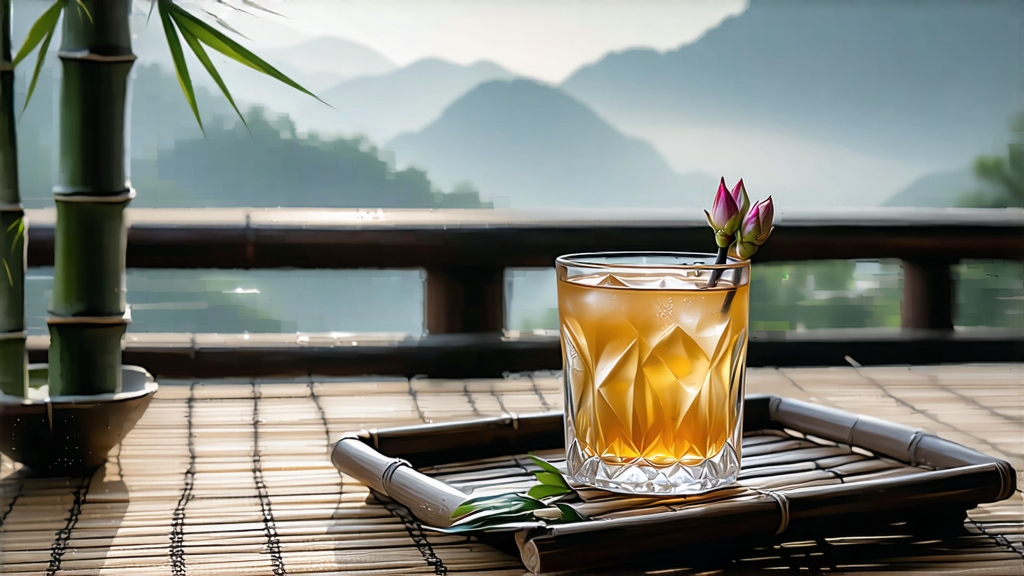
Among the six great families of Chinese tea, white tea is the one that asks the least yet reveals the most. Its gentlest ambassador is Bai Hao Yin Zhen—literally “White Down Silver Needle”—a tea so refined that a single ounce once rivaled the price of jade in Song-dynasty Fuzhou markets. International drinkers often meet white tea through bagged “Silver Needle” blends, but the original remains a terroir-bound masterpiece, hand-gathered for only ten frost-free days each spring in northern Fujian’s coastal hills. To understand China’s tea imagination, start with this quiet blade of sweetness that carries the scent of mountain mist and the memory of midnight moonlight.
History: from imperial tribute to minimalist icon
Bai Hao Yin Zhen’s documented career begins in the late Qing, when Fuding’s Taimu Mountain monks offered “needle-down” buds to the Guangxu Emperor as a cooling summer draught. Court physicians praised its ability to “clear inner fire without shocking the palace pulse,” and soon imperial brokers measured each tip against the length of a rice grain; anything shorter was rejected. When the last emperor fell, the tea vanished into local farmhouse jars until 1963, when a Guangzhou trade delegate re-introduced it to Hong Kong tea merchants who coined the English name “Silver Needle.” By the 1990s, European sommeliers discovered its low-oxidation chemistry: sky-high epigallocatechin gallate and theanine, a pairing that delivers calm alertness without the tannic bite of green tea. Today, Fuding county protects the cultivar under national geographical indication law, limiting production to 2,500 tons—less than 0.1 % of China’s annual tea output—and every kilo can be traced to one of three certified townships: Guan Yang, Pan Xi, or Tai Mu Shan.
Cultivar & picking: the arithmetic of perfection
Only two local clones are legal for authentic Yin Zhen: Fuding Da Bai (“Big White”) and the rarer Fuding Da Hao (“Big Down”), bushes whose spring buds average 2.8 cm, each sheathed in a duvet of protective trichomes that shimmer like frost under moonlight. Pickers work between 5 a.m. and 9 a.m. while dew still grips the hillside; sunlight above 20 °C will redden the cut end and disqualify the leaf. The ideal pluck is the unopened “fish-tail” bud—no second leaf, no stem, no rain damage. A skilled woman can gather 600 grams of fresh tips in four hours; that shrinks to 120 grams after drying, translating into roughly 9,000 individual buds per finished liang (50 g tin). Such arithmetic explains why imperial courts measured it by the needle, not the catty.
Craft: the art of doing almost nothing
White tea’s motto is “let time and air finish what the mountain began.” Once baskets reach the farmhouse, buds are spread on bamboo trays exactly 3 cm thick so that enzymatic heat can escape. The first stage, kai qing (“opening the green”), lasts 24–36 hours in a ventilated loft where mountain cross-breezes drop the leaf moisture from 75 % to 45 %. Masters judge readiness by ear: when a handful of buds rustles like dry grass yet still feels cool, they move to the second step—weng qing (“tender withering”)—a 12-hour rest in a shaded corridor where diffused light oxidizes the epidermis to a pale parchment color while preserving the downy silver. No pan-firing, no rolling, no kneading; the only heat comes from charcoal-warmed rooms on the final night, when temperature is raised to 28 °C for 90 minutes to lock in fragrance. The result is a needle that looks almost alive, its surface micro-fuzzed like a newborn peach.
Terroir: why Fuding tastes like sea mist
Fuding’s microclimate is a marriage of subtropical humidity and granitic drainage. Morning fog rolling off the East China Sea deposits ionized moisture on tea terraces, while afternoon sea breezes drop the temperature 8 °C within an hour, forcing the bush to thicken its trichomes. The soil is a coarse quartz-rich laterite that drains instantly after typhoons; roots dive three meters in search of fluorine-free aquifers. These stresses